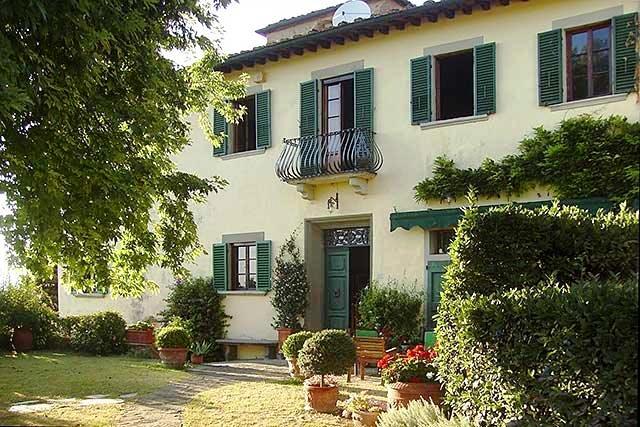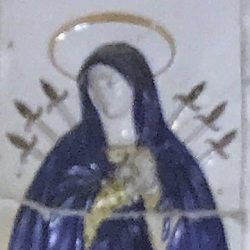Her følger en rekke tips og turforslag som tidligere eier av Villa La Citerna Mr. John Stevens formidlet. Han var engelsk og vi har valgt å la teksten stå i orginalspråket.
Things to do
Well there are plenty of them. I am nevertheless frequently asked for advice so here goes. As you know the house is about equidistant from Firenze and Siena and these are so obvious that I will not comment. They both take just over 30 minutes to reach. I would however wam you that both cities, now in common with almost all major Italian cities do not permit you to drive your own cars into the city centers. You have to leave your car in a parking lot on the outskirts from where a bus service will take you into the city center and later return you to the car. It is usually quite an efficient service.
Shorter and Longer trips
There is of course San Gimignano whose mediaeval skyscrapers you can see from my terrace if there is not too much haze. It is a very attractive small town surrounded by battlements! You can reach it in about 30 minutes via Certaldo. We go for a drink there in the evening and a quiet dinner, and sometimes to the opera in summer. It is very provincial but quite entertaining. There are wonderful frescoes in the Collegiata (a sort of sub cathedral) in the center of the town by Barna da Siena, Ghirlandaio and others. Better are the frescoes in the San Agostino church the other side of town by Gozzoli. There are many other bits and pieces to look at including an exhibition of torture instruments and the prison in the walls where the Red Brigades were/are imprisoned, but much more interesting is the town itself. We go in the evening when the day trippers are going home, but the churches with the frescoes are closing at that time. Try dinner at the Cisterna Hotel. Its carpaccio is delicious.
The town of Certaldo is just down the valley. The old city up the hill is worth a quick visit in the evening. Boccacio’s house has now been reconstructed almost as was after a bombing during WWII when our airmen mistook it for marshalling yards in nearby Empoli. The Palazzo Pretorio is quite interesting. It was the house/office of the Florentine governor whose job did not entertain thoughts of independance.
Quite a good restaurant, and very pleasant, at the Osteria dei Vicario. I should have put it on the list.
For just a pleasant run in the car, drive allmost into Certaldo and take a sharp turning on your left for a road which takes you to Barberino and Petrognano (about 14 kms). A quiet country road through olive groves and vineyards. Stop when you get to just before the hamlet of Petrognano. There is an octagonal chapel built at the end of the 16th century to commemorate the demise of the semi mythical city of Semifonte. (400 years earlier). The view is over the countryside that was once over Semifonte burned to the ground (for the second time) as an economic rival by jealous Florentines in the very early 13th century. The restaurant Paese referred to above is just around the comer in the next hamlet called Petrognano. You could do worse than eat there. Drive on to Barberino and home. (There is also a very decent, but simple restaurant at Saint Appiano, just off the road to Barberino and it has an interesting 13th century church.)
Another short trip is to drive to the Badia a Passignano, and stop if it interests you in the Antinori wine cellar that is attached to the restaurant, but is not part of it. The wine cellar has a vast choice of Antinori wines at reasonable prices. The vineyards around you actually belong to the monastery but are rented out to Antinori. The abbey was founded in the 11th century, but after the 16th century fell into desuetude. A polish aristocrat acquired it in the late 19 century and restored a great deal, before handing it back to the monks. Alas the monastery is rarely open to visitors. Then drive straight on until you come a rough road. On your right there are absolutely stunning views of the abbey. Eventually you will come to a macadamized road and I recommend you go on to the little town of Greve. Park in the attractive main square that is dominated by a huge statute of Verrazzano who was a local boy. It has good, but slightly expensive wine shops. It is also famous for its sausages made from a sort of piebald pig. Going very gently, this is a half day outing.
On your way back from Siena you might try the very attractive small village of Monteriggioni, surrounded by battlements again. It is just off the raccordo and won’t take 15 minutes. Dante sang its praises in the Divine Comedy. Others now praise the Antica Osteria La Legenda dei Frati (tel: 0577 301 222) and the popular Pozzo (tel:0577 304 127)
Arezzo – Volterra
Further away is Aiezzo, a jewelry centre with a fine square (triangular and sloping) surrounded by a magnificent church, semi Romanesque, Vasari’s house and shops of the considerable antique trade. One of the main reasons for going there however is to admire the recently restored Piero della Francesos in the San Francesco church. Among them is the magnificent Dream of Constantine, one of the earliest ever night time paintings. Opposite there is wonderful café and ice cream shop to sustain you after a brief encounter with a spot of culture. Another nearby town is Volterra, a former Etruscan city on a hilltop, about 75 minutes away, the same as Arezzo. Not much left of the Etruscans themselves of course except for the shops selling tourists alabaster statues and clocks. Interesting town however, wonderful municipal buildings and cathedral with a fabulous wooden crucifix.
My favourite trip to take fiends who know Siena and Firenze is however San Antimo, an abbey about 35 kms South of Siena. It was founded by Charlemagne (so they say) and was repopulated by largely French monks in the recent past. The site of the Romanesque church is quite beautiful. Mass on Sundays at 11:00 is usually in Latin. All the services are sung in Gregorian chant. In the week there are all sorts of shorts masses such as vespers etc. It is about 105 minutes drive if you do not know the way (Siena, Buonconvento, Montalcino, San Antinio), There are brochures on it in the house.
Monte Amiato
I then usually take fiends over the foothills of Monte Amiato, the highest mountain in Tuscany, to the charming town of Pienza. This is home of Pecorino cheese and nearby Montalcino that of Brunello wines, the best of the Tuscans. Round trip takes about 6 hours. Depends on how you take it. Montalcino is a very attractive hill top village on the way. The battlements of the city that withstood the Florentines for 20 years after Siena itself fell are still standing. They house a simple enoteca selling Brunellos and sandwiches.
Pisa and Lucca
Many people are taken by Pisa, and of course the tower and cathedral etc are all very interesting. My favourite in that neighbourhood however is Lucca, You can easily do it in a day and back. The city is surrounded by massive defensive walls built in the 16th and 17th century. Napoleon’s lascivious sister Elisa ruled in the early 19th century and made rather a good job of it. It has retained a sort of early 19th century atmosphere despite some very attractive gothic period church inside the walls. The old Roman amphitheatre is now an attractive square. Just outside the city about 10 kms to the north is Villa Reale at Marlia where Elisa had the magnificent gardens both restored and developed.
I could witter on, but I think that is enough.
Perugia
Perugia is another good day exploratory visit and so is Cortona that has a marvelous antiques. Nevertheless worry about antiques in Italy. Anything that has a splice of old wood in it seems to qualify as antique.
Florence
When you have had enough of gawking at pictures, churches and various other buildings you might want to do some more shopping. There is quite a good small market selling essentially leather goods and a few other tilings, near the Piazza della Signoria. There is however a much larger and more interesting market near the San Lorenzo church selling leather goods, silk shirts, marbled paper, food of all descriptions, etc. When you have finished exhausted you might make for the Rivou-e café on the Piazza della Signoria, Firenze’s swankest and enjoy an (expensive) cup of coffee and some delicious sandwiches. For those interested in something stronger you might wander along the Lunagamo as far as Harry’s Bar which vies with the Venice establishment to establish which is the original. Those present are of the same type. Italian men in English cloth cut of course by Italian tailors, and women, often American, usually rich with their dark glasses carefully adjusted on their foreheads, and invariably talking in a loud voice. To put up with all this you might imbibe Italy’s favourite tipple, invented by Count Negroni, a Florentine aristocrat in the 1920s. A Negroni is one third sweet vermouth, one third gin, and one third Campari, with a slice of orange. The ladies are swigging Bellinis, white peach juice and champagne.

